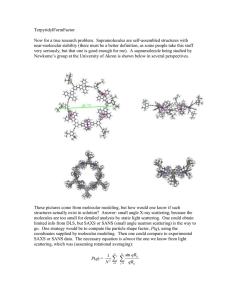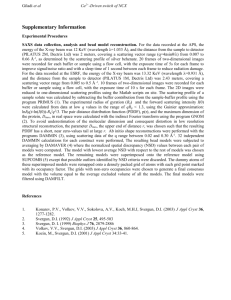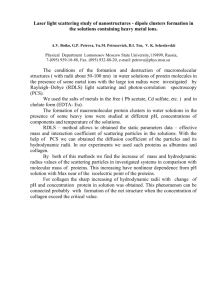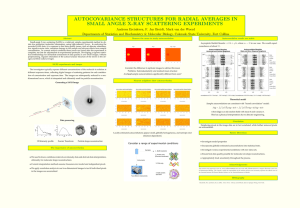Material Suplementar
advertisement
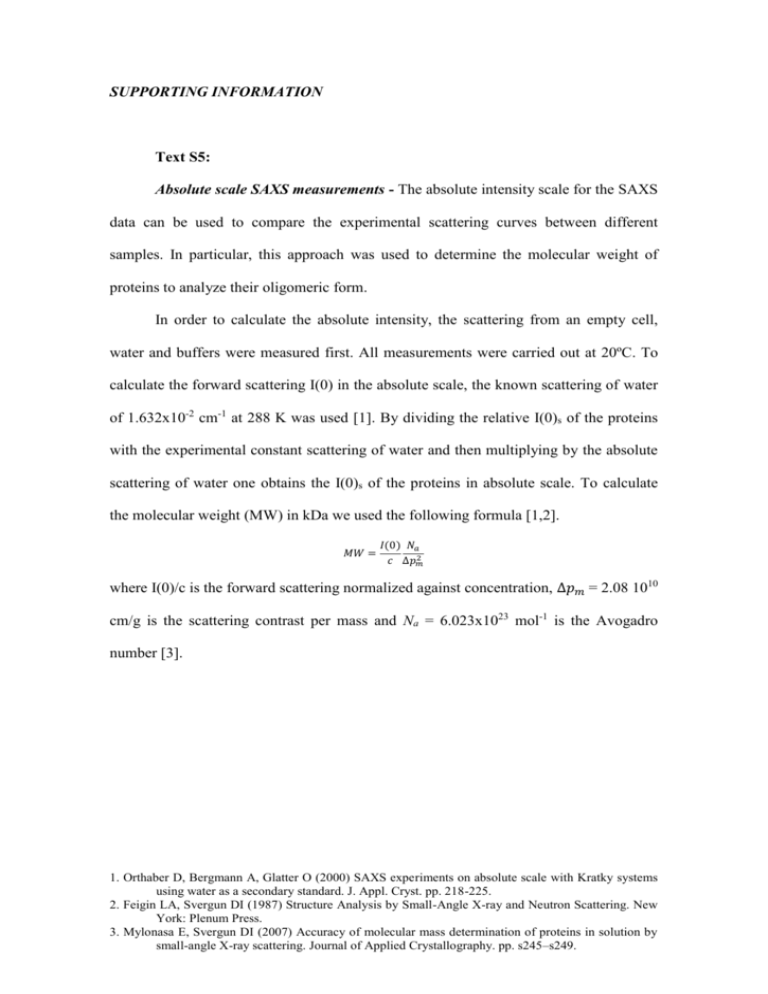
SUPPORTING INFORMATION Text S5: Absolute scale SAXS measurements - The absolute intensity scale for the SAXS data can be used to compare the experimental scattering curves between different samples. In particular, this approach was used to determine the molecular weight of proteins to analyze their oligomeric form. In order to calculate the absolute intensity, the scattering from an empty cell, water and buffers were measured first. All measurements were carried out at 20ºC. To calculate the forward scattering I(0) in the absolute scale, the known scattering of water of 1.632x10-2 cm-1 at 288 K was used [1]. By dividing the relative I(0)s of the proteins with the experimental constant scattering of water and then multiplying by the absolute scattering of water one obtains the I(0)s of the proteins in absolute scale. To calculate the molecular weight (MW) in kDa we used the following formula [1,2]. 𝑀𝑊 = 𝐼(0) 𝑁𝑎 2 𝑐 ∆𝑝𝑚 where I(0)/c is the forward scattering normalized against concentration, ∆𝑝𝑚 = 2.08 1010 cm/g is the scattering contrast per mass and Na = 6.023x1023 mol-1 is the Avogadro number [3]. 1. Orthaber D, Bergmann A, Glatter O (2000) SAXS experiments on absolute scale with Kratky systems using water as a secondary standard. J. Appl. Cryst. pp. 218-225. 2. Feigin LA, Svergun DI (1987) Structure Analysis by Small-Angle X-ray and Neutron Scattering. New York: Plenum Press. 3. Mylonasa E, Svergun DI (2007) Accuracy of molecular mass determination of proteins in solution by small-angle X-ray scattering. Journal of Applied Crystallography. pp. s245–s249.
